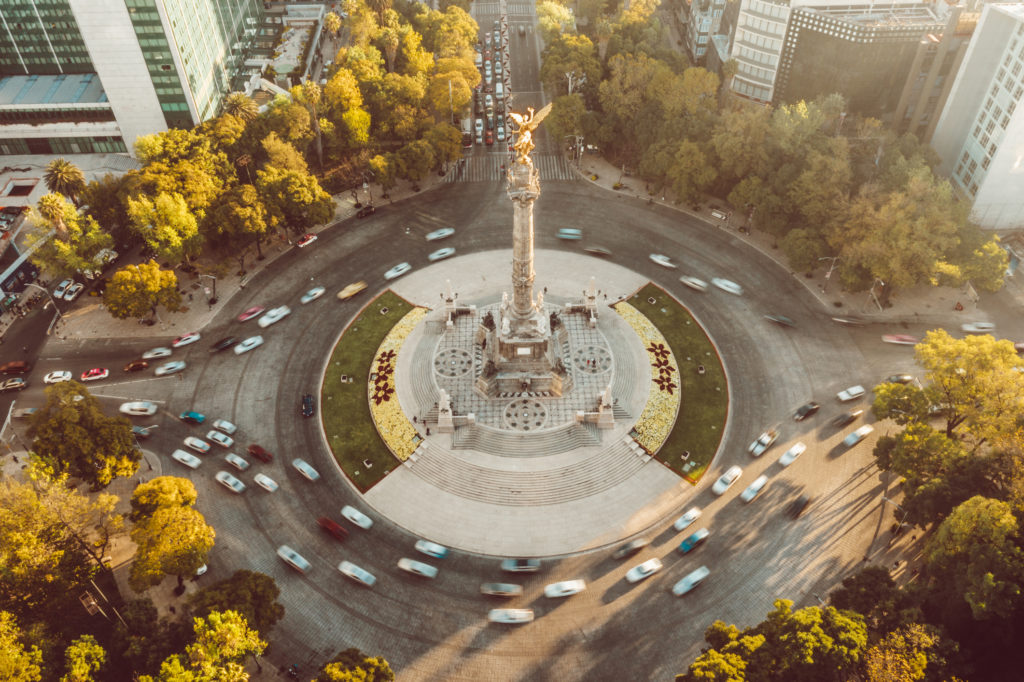- US Toll-Free:+1-888-671-5387
- International:+1-646-820-5387
- UK Toll-Free:+44-808-189-0324
- US Toll-Free:+1-888-671-5387
- International:+1-646-820-5387
- UK Toll-Free:+44-808-189-0324
- US Toll Free: +1-888-671-5387
- International: +1-646-820-5387
- UK Toll Free: +44-808-189-0324
"Is it safe to go to Mexico" is a question we have heard often, and the answer is always a resounding yes, provided you know where to go and do your research (and/or work closely with your experienced Priority One Jets concierge). There really is no more fascinating city in the world than Mexico's misunderstood capital. With a population of over 21 million, and a crime rate which is a third of Washington, DC, Mexico City had a serious scrub-up for its bi-centennial, and now some places like mariachi-filled Plaza Garibaldi are considered safe enough to be considered a 'Disney version' of its former gritty self. Also, many restored colonial buildings show details long obscured by years of pollution build-up. Meanwhile, this ancient city built over a filled-in lake has Aztec canals, pyramids, Diego Rivera and Frida Kahlo's old studio, and hipster dining in chic eateries of the Condesa and Polanco.

Must See: The Pyramids of Teotihuacan should be in every private jet charter to Mexico City visitor's plans. The mammoth pyramid of the sun and its neighbor, the moon, are the best known highlights of one of the largest Pre-Columbian city in the Americas, but the most spectacular is that of the Plumed Serpentor the Templo de Quetzalcóatl. The best plan is getting an early start for the long haul northeast to clamber around the site in the morning, and then take shelter in the museum and covered areas during the midday sun.
Lodging: A city of this immense size surely offers the jet charter to Mexico City traveler every possible option when it comes to accommodations. One of the best is the Four Seasons Hotel Mexico, D.F. One of the city's most elegant and highly recommended lodgings, the hotel was designed to resemble a late-19th-century French-Mexican structure, with aristocratically furnished rooms facing a beautifully landscaped central courtyard.
Ground Transportation: For a town of such gargantuan proportions, Mexico City is remarkably easy to get around. Wherever you need to go, there is likely some conveyance heading there momentarily. A swift, extensive and incredibly cheap subway system covers most of the metropolis with frequent service almost round the clock. Above ground, peseros ("microbuses"), regular buses and electric-powered trolley buses move the city's masses. The metrobus, a recent addition, plies its own lane along the city's principal north-south artery, Av Insurgentes. Taxis are plentiful and reasonably-priced, whether you're hailing one off the street or (more securely) phoning one of the radio-taxi services. Of course you can also drive, though pollution, congestion and erratic driver behavior make this the least appealing option. Getting in and out of town is also fairly straightforward, with frequent, inexpensive bus services linking the capital with practically every point in the republic.

Recommended Books: The Uncomfortable Dead, Paco Ignacio Taibo and Subcomandante Marcos, (2004). The story follows ElÃas Contreras, a Zapatista investigation commission, and Héctor Belascorán, a private detective from Mexico City and recurring character of Taibo's, as they try to unravel the mystery of a dead man leaving messages on answering phones, find out who Morales is, and generally investigate Bad and the Evil.
Currency: The Mexican Peso is the local currency.
Calling Code Mexico City: 011 + 52 + 55 + phone number
Best Travel Dates and Packing Tips: Visitors who are accustomed to the heat of Mexico's beaches may be surprised by the temperate climate of Mexico City, where the climate is fairly mild year round. The coldest and thus most smog-infested months are December and January. Although it stays warm during the day, the temperature dips considerably at night during these months, so you'll need to bring a jacket.
The warmest months of the year are April and May, though it never gets too hot thanks to the high altitude. May to October is the rainy season, which brings strong downpours and causes occasional flooding, although you'll often have hours or days of sunshine too.

